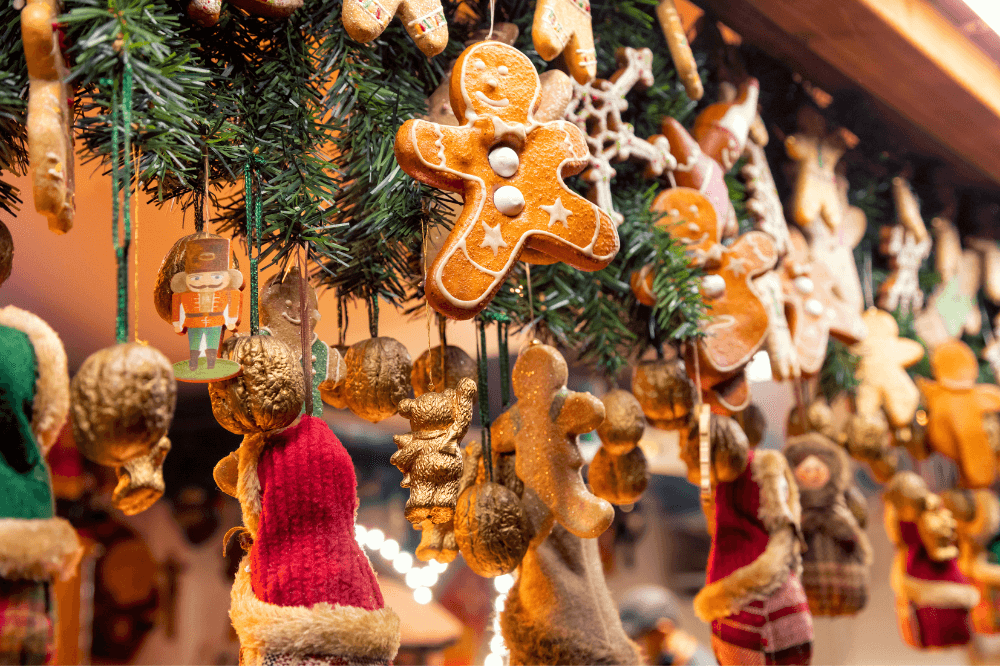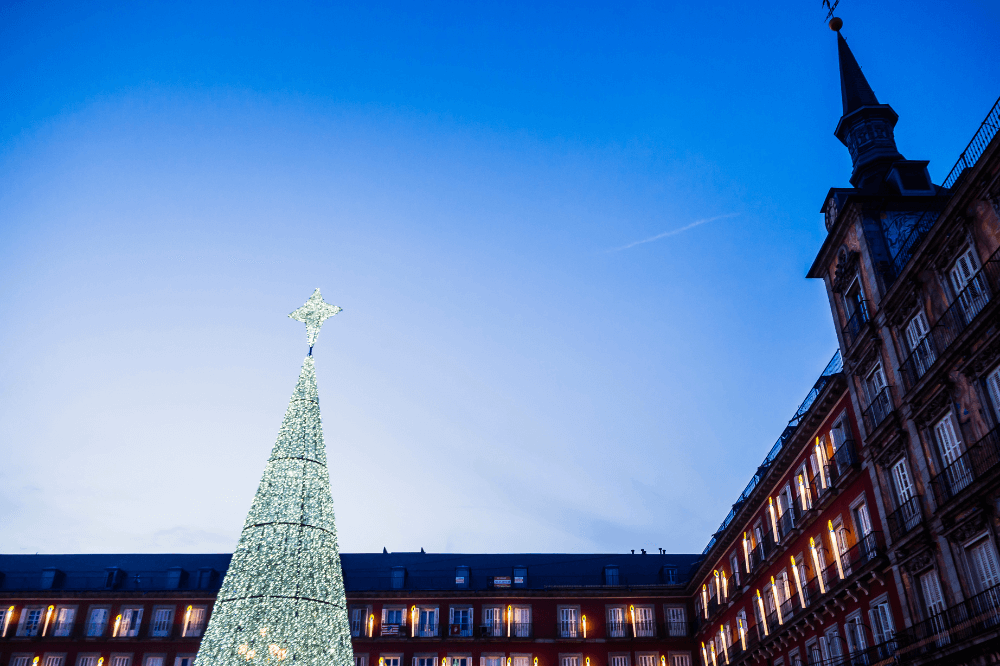Thinking about a getaway during Semana Santa (Holy Week) but not sure where to go?
In this guide, we’ll cover everything you need to know, from the exact dates of Holy Week to the must-visit cities you simply can’t miss.
Plus, we’ll share some practical tips to make your trip as smooth as possible.
So, grab a coffee, get comfortable, and keep reading for our top recommendations for an unforgettable Holy Week in Spain.
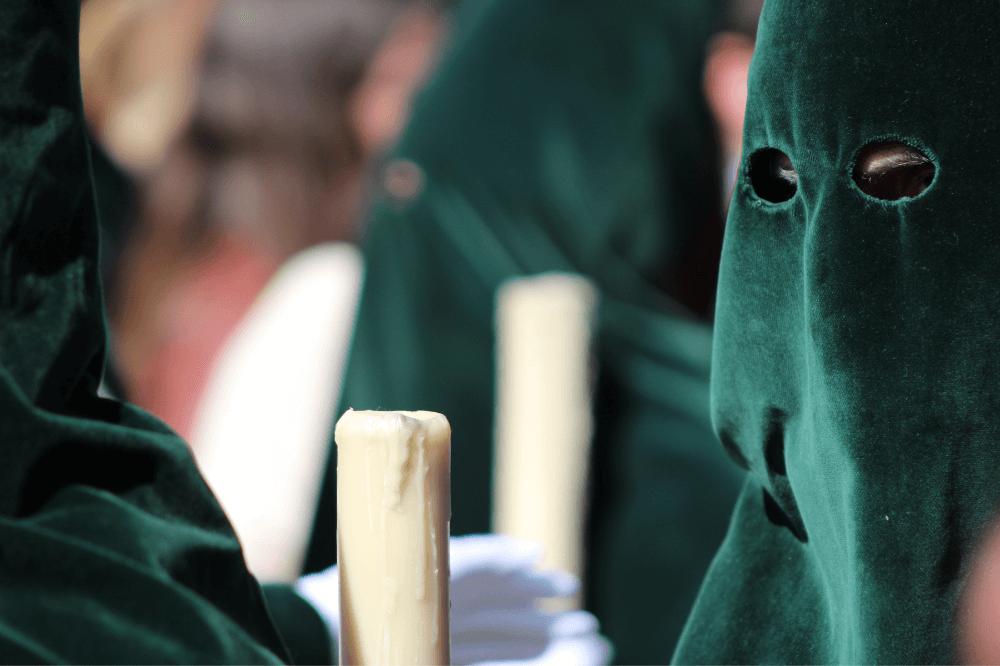
What is Holy Week and when is it celebrated?
Semana Santa is a Christian religious celebration that commemorates the passion, death, and resurrection of Jesus Christ.
But in Spain, it goes far beyond religion. It has evolved into a unique cultural expression, blending devotion, art, music, and deeply rooted traditions that vary widely across different regions.
So, when exactly does it take place? Here’s where it gets interesting: Holy Week doesn’t have a fixed date on the calendar.
It begins on Palm Sunday and ends on Easter Sunday.
The date is determined by the lunar calendar. Specifically, it falls on the first Sunday after the first full moon following the spring equinox in the Northern Hemisphere.
Sounds complicated, right? To put it simply, Holy Week usually falls between late March and April, but the exact dates change every year.
Holy Week guide: best cities in Spain to visit during Semana Santa
Spain has countless cities that host incredible Semana Santa celebrations, but if we had to choose, these seven truly deserve a spot on your travel bucket list.
1. Seville
If there’s one place that will leave you speechless during Holy Week, it’s Seville.
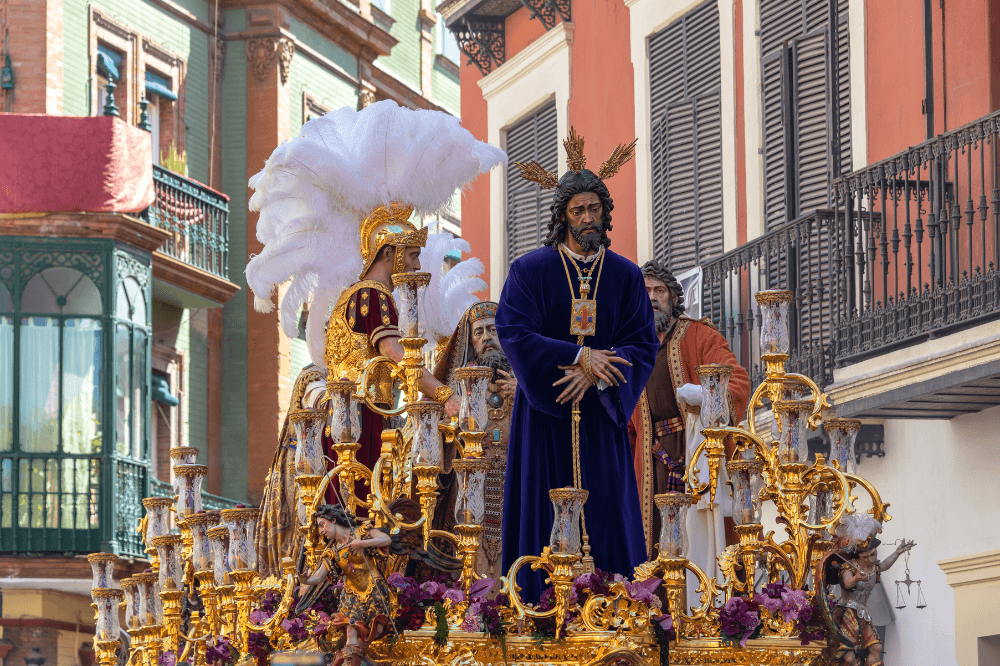
The Andalusian capital completely transforms during these days, and we’re telling you now, prepare for some intense emotions.
The pasos (massive platforms carrying religious statues) are true masterpieces of craftsmanship, weighing up to 2,000 kilos and carried on the shoulders of the costaleros, who move in perfect synchrony under the guidance of a capataz (overseer).
Watching them coordinate their movements beneath these monumental structures is simply breathtaking.
One of the most special moments and one that few visitors know about, is La Madrugá, the night from Holy Thursday to Friday.
We highly recommend watching the processions of Jesús del Gran Poder and La Macarena, but be warned, the streets get incredibly packed.
Pro tip: Don’t just stay around the Cathedral and city center.
Neighborhoods like Triana and La Macarena offer a more authentic, less touristy experience.
And if you’re looking for a truly unique moment in your travel, check out our Seville culinary experiences a chance to taste local flavors in the heart of the city in a local houses!
Explore our experiences with local cooks.
2. Granada
What makes Holy Week in Granada truly unique is the contrast between its different areas.
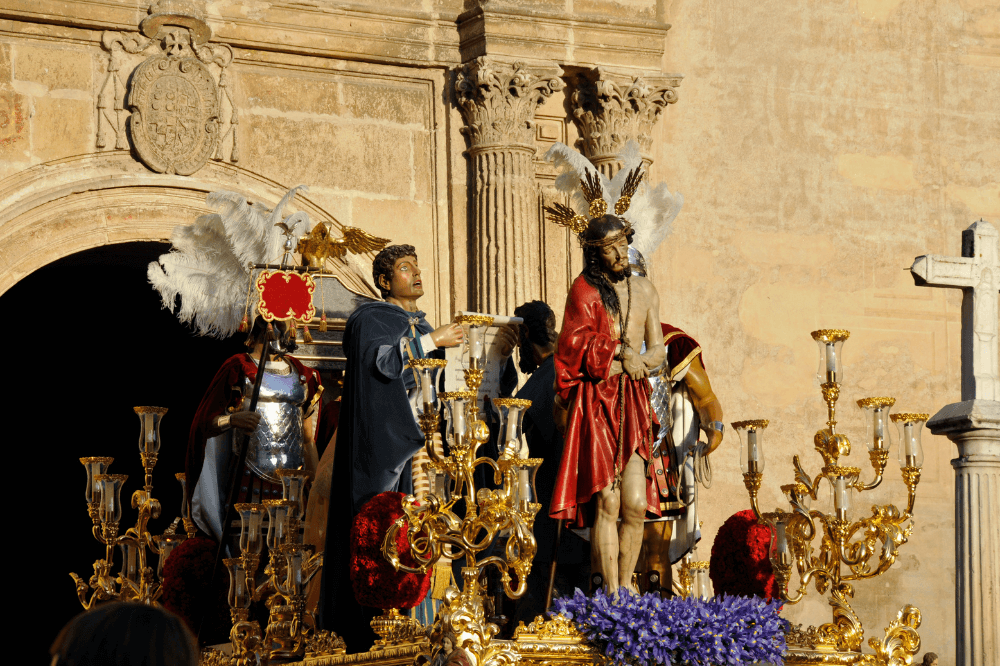
On one hand, you have the official processions winding through the historic city center, passing by Granada’s Cathedral.
But if you’re looking for something extra special, don’t miss the processions climbing the narrow, whitewashed streets of the Albaicín.
Another thing we love about Granada’s Holy Week is that, unlike in some other cities, you can easily escape the religious intensity if you need a breather.
A walk through the gardens of the Generalife or a climb up to San Nicolás viewpoint will give you a completely different perspective of the city buzzing with energy below.
And of course, you can’t leave without experiencing authentic local cuisine join one of our Granada cooking experiences for a real taste of tradition!
3. Toledo
Declared a Festival of International Tourist Interest, Holy Week in Toledo is extraordinary, thanks to its unforgettable medieval setting.

Torchlit processions winding through narrow, cobbled streets of Moorish and medieval origin, with the majestic Toledo Cathedral towering in the background.
It feels like stepping back in time.
One of the most impressive but lesser-known processions is Cristo de la Vega, held on Good Friday.
The statue is carried to the ruins of the ancient Basilica of Santa Leocadia, where legend has it that a Christ miraculously moved his arm to testify in favor of a young woman.
Another fascinating tradition: Toledo is one of the few places where you can witness the “Lignum Crucis” procession. This Holy Week ritual, celebrated on Good Friday night, involves a relic said to contain a fragment of the True Cross.
The medieval, mystical atmosphere of this event is something you won’t experience anywhere else.
4. Málaga
Málaga’s Holy Week is probably the most vibrant and colorful of all the ones we’re recommending.
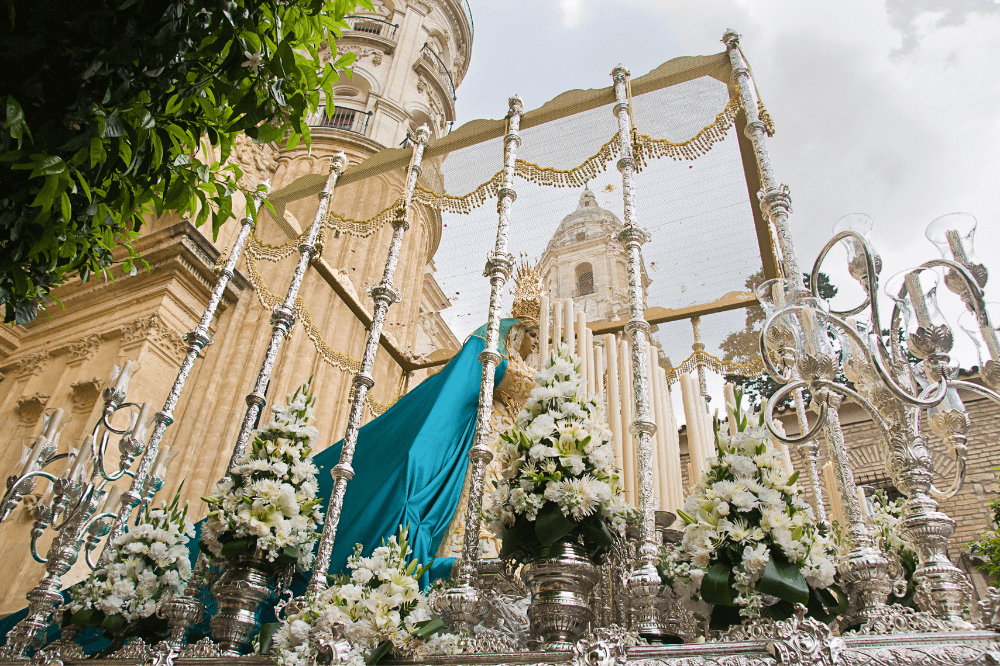
What makes it stand out? The “tronos” (as the locals call their religious floats) and the way they are carried.
Unlike in Seville, where the carriers walk hidden beneath the structure, Málaga’s hombres de trono carry the floats on their shoulders, in full view, moving with a distinctive swaying motion that looks almost like a dance.
And when the capataz shouts “¡Arriba!” and the trono suddenly lifts, it’s impossible not to get chills.
Another unique touch, Málaga’s marching bands have a style of their own, playing livelier, more rhythmic tunes than in other cities.
One of the most unforgettable moments is when some of the most revered statues, like Cristo de la Buena Muerte (known as “El Chiquito”) or Cristo de los Gitanos, receive honors from the Spanish Legion, whose distinctive chants and precise marching create an electrifying atmosphere.
For a true local experience, we recommend trying the traditional food prepared by our local hosts in Málaga, because Semana Santa is also about flavors and traditions, where you could try some typical food of Holy Week by a locals!
Explore our experiences with local cooks.
5. Salamanca
What makes Holy Week in Salamanca so fascinating is the contrast between the solemn processions and the lively, youthful atmosphere of this university city.
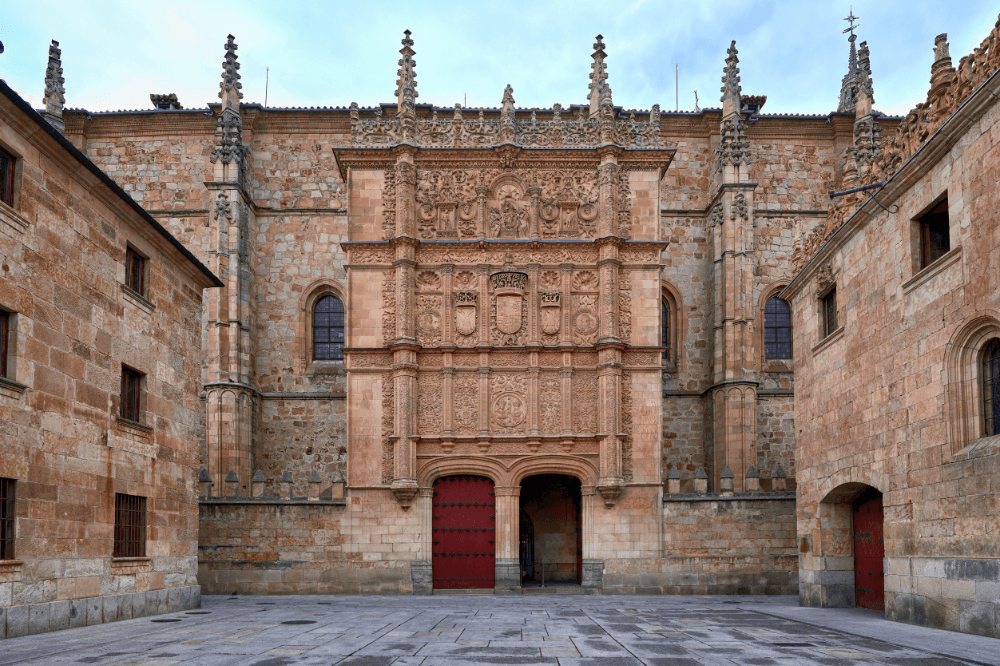
One of the must-see events is the Hermandad Universitaria del Cristo de la Luz, a procession exclusively made up of professors and students.
It takes place on Holy Wednesday, starting from the Patio de Escuelas Menores of the University of Salamanca, creating a powerful mix of religious devotion and academic tradition.
Another incredible moment is the Procesión del Encuentro, where the statues of Jesus Resurrected and the Virgin Mary start from different parts of the city and meet in the Plaza Mayor. It’s an emotional scene, symbolizing the joy of the resurrection.
Did you know? Some of Salamanca’s religious brotherhoods, like the Seráfica Hermandad, date back to the 13th century, making them among the oldest in Spain!
6. Cuenca
Cuenca offers one of the most unique and underrated Holy Week celebrations in Spain and trust us, it’s absolutely worth experiencing.
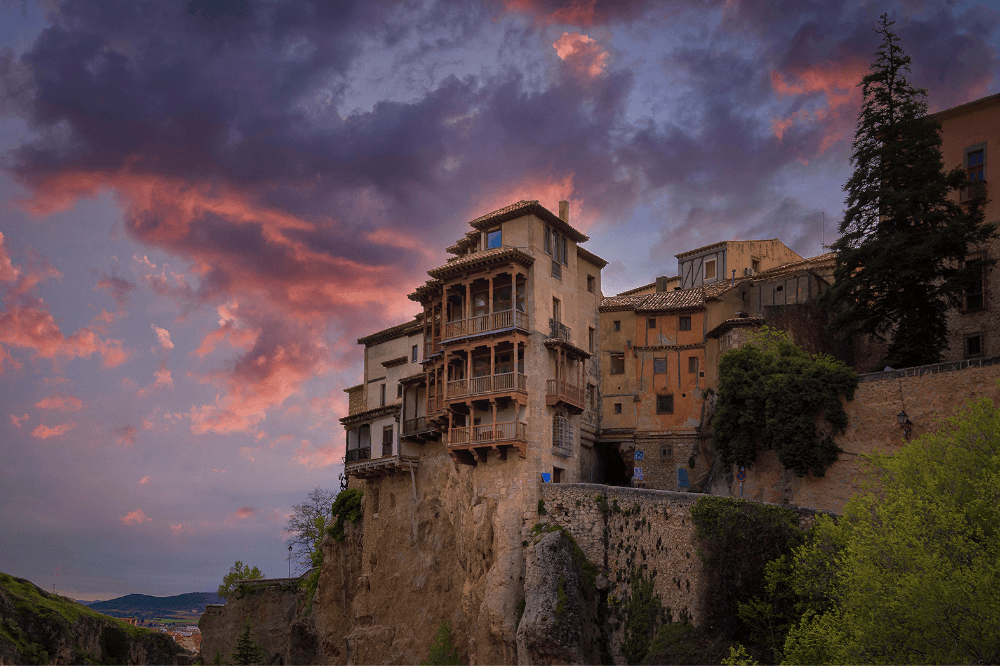
The standout tradition? Los Turbos. On Good Friday, a group of people play out-of-tune trumpets and beat drums at the moment Jesus is arrested, creating a chaotic, almost eerie sound that symbolizes the turmoil of his capture.
Another fascinating tradition is the Las Carracas procession. Instead of church bells, participants use wooden instruments to make loud, rattling sounds, symbolizing the silence of the church bells, which, according to tradition, “travel to Rome” during these days.
Special tip for Cuenca: If you can, attend one of the sacred music concerts held inside Cuenca’s Cathedral as part of the Semana de Música Religiosa de Cuenca, a world-renowned festival.
The combination of the acoustics, the candlelit ambiance, and the hauntingly beautiful music makes for an unforgettable experience.
And while you’re in Cuenca, don’t leave without trying its traditional Semana Santa cuisine.
Some local specialties include:
- Morteruelo: A rich, warm game meat pâté.
- Zarajos: Grilled lamb intestines, which might sound unusual, but they’re a local delicacy.
7. Zamora
Holy Week in Zamora is probably the most solemn and austere of all.
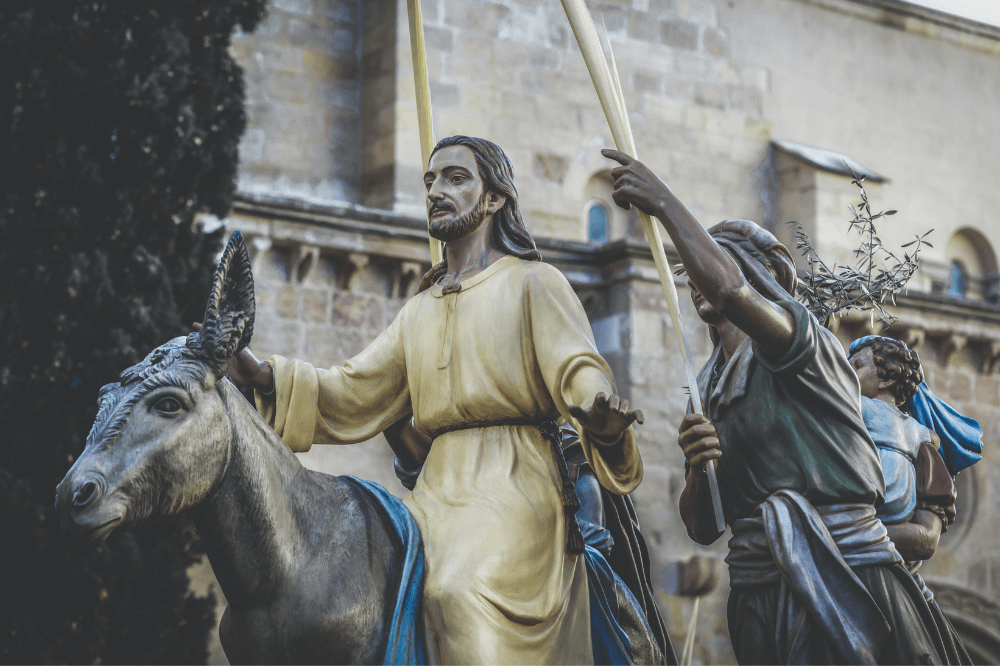
What makes it so special is its simplicity and deep sense of reflection. Many of its processions take place in complete silence, broken only by the sound of the cofrades’ (brotherhood members) footsteps on the cobblestone streets and, in some cases, by the haunting Miserere chant.
One of the most powerful traditions is that of the “Congregantes del Silencio”, who take part in the Holy Wednesday procession.
Dressed in plain black robes and hoods, with no distinguishing marks, they walk barefoot and in total silence. The atmosphere is absolutely chilling.
Another incredible procession is the Santo Entierro on Good Friday, where all the city’s brotherhoods come together, parading their respective pasos through the city in a breathtaking, hours-long spectacle.
Did you know? Zamora is home to some of the oldest religious statues still in use for processions, like the Cristo de las Injurias, which dates back to the 16th century.
And if you visit Zamora, don’t leave without trying its traditional Easter sweets especially aceitadas and sopas de almendra, which have been eaten after processions for centuries to regain strength.
Essential tips for your Holy Week trip
Now that you know where to go, here are some practical tips to make your experience as smooth and enjoyable as possible:
- Book well in advance: and when we say well in advance, we mean it months ahead! In cities like Seville or Málaga, hotels sell out six months in advance, and prices skyrocket. If you find a last-minute deal, it’s likely far from the city center or overpriced.
- Plan your transportation carefully: many streets are closed to traffic during processions, and driving can be a nightmare. Check the routes and schedules beforehand and consider using public transport or better yet, walking!
- Dress appropriately: even if you’re visiting as a tourist, remember that these are religious events. There’s no need to dress formally but avoid overly flashy or inappropriate outfits. Also, nights can get chilly, even in the south, so bring an extra layer.
- Wear comfortable shoes: expect to walk a lot and stand for long periods, often on cobblestone Street. A good pair of sneakers will be your best friend.
- Bring water and snacks: processions can last hours, and finding an open bar or restaurant mid-route can be difficult. Keep a bottle of water and a small snack with you just in case.
- Protect yourself from the sun… or rain: depending on the timing, Holy Week can be hot or rainy. A hat or cap for sunny days, or a light raincoat (better than an umbrella, which can be annoying in crowds), will save you a lot of trouble.
- Respect the traditions: for many people, Holy Week holds deep religious significance. Stay respectful, don’t talk loudly during processions and follow the guidance of event organizers.
- Find the best viewing spots: instead of following an entire hour-long procession, find strategic locations to watch key moments tight turns, major plazas, or spots where special acts take place are great choices.
- Take advantage of early mornings: if you want to avoid big crowds, go to processions early in the morning. Plus, the soft dawn light creates a stunning, almost mystical atmosphere that few tourists get to experience.
Easter Week gastronomy
Because of religious traditions, meat was traditionally avoided during Lent and Holy Week, leading to a rich culinary tradition centered on fish and sweets.

Here are some must-try dishes you’ll find all over Spain:
- Potaje de Vigilia: A delicious chickpea stew with salt cod and spinach, traditionally eaten on Good Friday.
- Salt Cod (Bacalao) : The star ingredient of Easter Week, prepared in many ways: ajoarriero (garlic-based), with tomato sauce, as crispy fritters
- Torrijas :The ultimate Easter dessert! Slices of bread soaked in milk and wine, dipped in egg, fried, and covered in honey or cinnamon sugar. Every region has its own version and trying them all is a great excuse for a foodie trip!
- Pestiños : A classic Andalusian treat, made of fried dough flavored with sesame, cinnamon, or anise, then drenched in honey.
- Buñuelos de Viento: Light, airy dough balls, fried and filled with custard, chocolate, or cream.
Pro tip: Look for traditional bakeries, not commercial chains the quality is so much better, and you’ll be supporting local businesses that have kept these recipes alive for generations.
Holy Week guide with kids: how to make it enjoyable for them?
If you’re traveling as a family, Holy Week can be an amazing experience for children but it requires some planning.
- Pick shorter, more visual processions: some processions are long and solemn, which might be boring for kids. Look for processions with lively music, colorful elements, or dramatic visuals.
- Explain the meaning in a simple way: regardless of your beliefs, you can introduce them to the cultural and historical significance of what they’re seeing, adapting the explanation to their age.
- Find parallel activities: many cities offer kid-friendly events during Holy Week, such as: arts & crafts workshops, live performances adapted for young audiences.
- Pack an “emergency bag“: include water, snacks, a small toy, and wet wipes long events can be tiring, and being prepared avoids unnecessary stress.
- Stay in a central location: this makes it easier to return for a rest if needed, without relying on overcrowded public transport.
Bonus tip: If you’re in Valladolid, visit the National Sculpture Museum, which hosts kid-friendly Holy Week activities. A great way to help children understand what they’ll see in the streets.
Make your Holy Week experience truly unforgettable with Sazón The Folk Cook
Visiting Spain during Semana Santa is already a once-in-a-lifetime experience but you can make it even more special in the easiest way possible.
All you must do is book one of our local culinary experiences, available in different parts of Spain.
It’s the most authentic way to connect with Spanish traditions and gastronomy, sharing meals, stories, and laughter with locals who know these traditions best.



